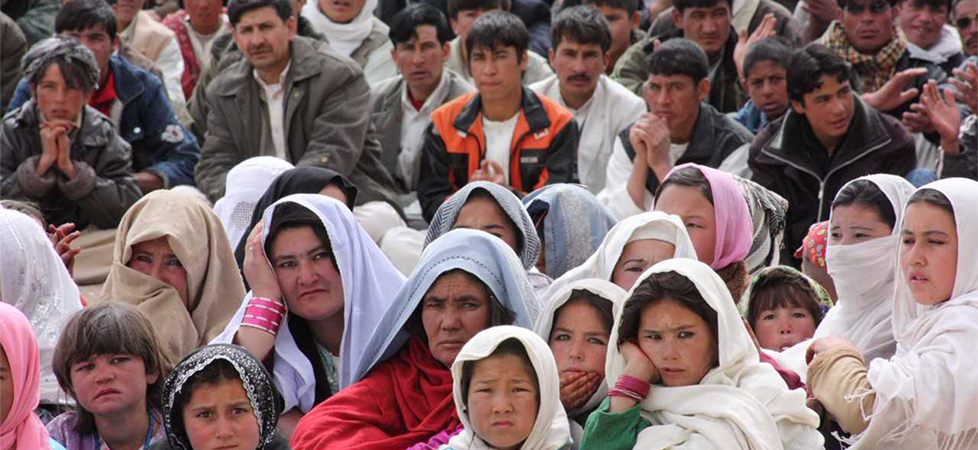Location: Luce Hall Auditorium
Time: 3:30pm – 5:30pm, April 13, 2018
Chair: David Edwards
This panel draws together three insightful papers that explore new modes of identity in contemporary Afghanistan; either by presenting new forms of Afghan identity or by discussing new framings for their analysis.
Khadija Abbasi – Home Bitter Home: “Iranigak”, New Forms of Identity in Afghanistan?
After the US-led intervention and the establishment of an interim government in 2001, Afghan refugees—settled in Iran for decades—faced greater public and state pressure to return to Afghanistan. For the second generation of Afghan refugees struggling to define ‘home’ in Iran, it was their first time to see Afghanistan, their supposed ‘home country’; therefore, the term ‘returnee’ is problematic here. The derogatory term afghâni used by individual Iranians to remind them that they belong to Afghanistan. They came ‘home’ to be called irânigak i.e. little Iranians by Afghans who either stayed in Afghanistan or those who have been out of the country, but have not ‘forgotten’ their identity. Through the pejorative term irânigak in this presentation, I bring my auto-ethnographic account to cast light on new forms of identity that have emerged in contemporary Afghanistan, particularly emerging peculiarity between returnees and those who stayed in. I attempt to depict how the experience of ‘coming home’ turned bitter for some Iran-raised and born Afghans. Applying irânigak as a social category, I attempt to demonstrate how the construction of identities of irânigak intersects on the grounds of gender, generation, ethnicity, religion and age which informs their social exclusion and stigmatisation and their social organisation. This paper will not only cast light on the multi-faceted exclusions this population encounter, but also on how they have become a vector of social change in Afghanistan particularly in socio-cultural and political landscape.
Omar Sharifi – Nauroz as Social Site, Living in an Afghan Atmosphere
Every year on March 20/21, hundreds of thousands of people from all corners of Afghanistan gather in the city of Mazar-e-Sharif (ancient Bactria-Balkh) to celebrate the Afghan/Persian New Year, Nauroz. The Nauroz festival is held in the Shrine of Ali bin Abu Talib, the cousin and son-in-law of the Prophet Mohammad, the fourth Caliph of Sunni Islam and the first Imam in Shia tradition. The Nauroz festival is not a religious pilgrimage or part of the Islamic calendar, but a syncretic event that happens every year in a self-organized way. Despite its association with the Islamic shrine, the festival and its associated ceremonies such as Janda bala (raising the flag), public performances of music and theatrical shows, poetry contests, storytelling and Sufi Zikr sessions, are all perceived as (not entirely) secular events. Both Sunni and Shia Afghans from all walks of life, including high ranking government officials gather in the Shrine of Ali to attend the official Nauroz ceremony and other associated festivities. This important designation is considered a space for “ethnic and religious harmony”, manifestation of collective identity and symbolic reaffirmation of the political legitimacy of the central government.
My paper examines the processes of the juxtapositions that give rise to the Nauroz festival and its associated festivities, and how it came to be celebrated in an Islamic shrine, viewing the festival as an arena for reproduction and possible negotiation of the notions of nation, governance, ethnic identity and frameworks for plural coexistence.
Nafay Choudhury – Adapting to Markets: The Shifting Identities of Afghanistan’s Money Exchangers
This paper focuses on the shifting identities of Afghanistan’s money exchangers in the face of changing social, political, and economic conditions. Money exchangers are responsible for currency exchanging, money transfers (hawala), deposit safekeeping, trade financing, and
controlling the money supply. Their identity is deeply intertwined with the social relations that arise from their transactions. While factors such as ethnicity, language, geographic region of origin, and qawm play a role in shaping their identities and behaviour, such categories elude the dynamism and flexibility of their trade. The mark of a successful money exchanger lies in the fluidity of his social relationships, his flexibility in the face of unpredictable circumstances, and his ability to maintain a sense of self despite seeming contradictions and inconsistencies. Their role in the market is complicated by the presence of commercial banks, which offer many comparable financial services, as well as of the government, which regulates certain transactions.
Far from being supposedly pre-modern actors with fixed modes of operation, these exchangers reveal resilience and ingenuity in adapting to changing circumstances by forging new ties and new relations. While maintaining kinship-based social structures, they have co-opted—rather than resisted—banks and formal state institutions into their operations through a variety of creative techniques. Their behaviour is not only informed by their multiple spheres of social interaction, but also generative of new forms of sociality. This research shows how social identity may challenge categories such as ‘traditional’ and ‘modern’, as exchangers inhabit a normative space rife with contradictions and conciliations that give meaning to their social and interactional world.


